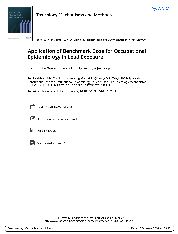摘要
The benchmark dose (BMD) method has been proposed as an alternative to the no-observed-adverse-effect level (NOAEL) approach for assessing noncancer risks associated with hazardous compounds. The benchmark dose method is a more powerful statistical tool than the traditional NOAEL approach and represents a step in the right direction for a more accurate risk assessment. The benchmark dose method involves fitting a mathematical model to all the dose-response data within a study, and thus more biological information is incorporated in the resulting estimates of guidance values. The BMD and the lower confidence limit on BMD (BMDL) of blood lead to cause renal dysfunction were determined in the population exposure to lead. The blood lead level was used as an exposure biomarker, while total protein (TP), beta(2)-microglobulin (beta(2)-MG), and N-Acetyl-beta-D-glucosaminidase (NAG) in the urine were considered as effect biomarkers. The dichotomized data were used as effect endpoints. The BMD and BMDL of blood lead were determined at the 10% benchmark response for the effect biomarkers by using BMDS Version 1.3.1. The results showed that BMD and BMDL of blood lead for NAG, TP, and beta(2)-MG ranged from 323.6 to 754.3 mu g/L and 274.2 to 541.5 mu g/L, respectively. The BMDL for blood lead was ranked from high to low as TP, beta(2)-MG, and NAG. Urinary NAG activity could be served as a sensitive indicator to detect early renal dysfunction.
